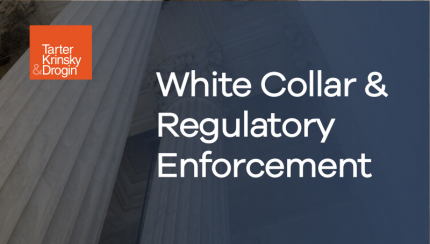Did you know that day trading without enough capital is like trying to swim with a pocket full of rocks? It’s a recipe for disaster! In this article, we dive into the crucial impact of regulations on day trading capital requirements. Explore how regulations set these requirements, the minimum capital needed, and the roles of FINRA and SEC rules. We’ll break down pattern day trader rules, leverage effects, and the penalties for non-compliance. Additionally, discover how different brokerages enforce capital needs, the risks of insufficient capital, and the influence of margin requirements. We’ll also touch on international regulations and how to prepare the necessary documentation. Lastly, learn best practices to ensure you meet your capital requirements and navigate sudden regulatory changes effectively. Let DayTradingBusiness guide you through this essential aspect of trading!
How do regulations set capital requirements for day trading?
Regulations set minimum capital thresholds, like the SEC’s $25,000 rule for pattern day traders, requiring traders to maintain that amount in their accounts. FINRA and exchanges enforce these minimums, making it illegal to day trade with less than the specified capital. They also require regular account monitoring to ensure traders meet these standards before executing new trades.
What is the minimum capital needed for day trading?
Regulations typically require a minimum of $25,000 in margin account equity for pattern day trading in the US. Some countries or brokerages may set lower thresholds, but $25,000 is the standard for active day traders under FINRA rules.
How do FINRA and SEC rules affect day trading capital?
FINRA and SEC rules set minimum capital requirements for day traders. Pattern day traders must maintain at least $25,000 in their trading account to execute four or more day trades within five business days. Falling below this threshold restricts trading until the balance is restored. These regulations ensure traders have enough capital to cover risks but limit smaller traders from high-frequency trading.
What are the pattern day trader rules and capital limits?
Pattern day trader rules require maintaining a minimum of $25,000 in your trading account. If your account drops below this, you can't day trade until you bring it back up. You can execute no more than three day trades within five business days unless you have the $25,000 minimum. Failure to meet these rules results in a 90-day trading restriction or account liquidation.
How does leverage influence day trading capital needs?
Leverage allows day traders to control larger positions with less capital, reducing initial capital needs. It amplifies potential gains but also increases risk, meaning traders can trade bigger amounts without tying up as much cash. However, regulations set limits on leverage to prevent excessive risk, which can raise the minimum capital required for day trading. Without restrictions, high leverage could lower the amount of trading capital needed, but regulations ensure traders have enough cushion to cover potential losses.
What penalties exist for not meeting day trading capital rules?
If you don’t meet the $25,000 minimum capital requirement for pattern day trading, your brokerage can restrict you to a cash account for 90 days, limit your trading to cash-only, or suspend your trading privileges. Failing to maintain the minimum can also lead to account liquidation or restrictions until the required funds are restored.
How do different brokerages enforce capital requirements?

Brokerages enforce capital requirements by setting minimum account balances, such as the $25,000 minimum for pattern day trading in the U.S. They monitor trading activity to ensure traders don't exceed allowed day trades relative to their account size. If a trader falls below the set minimum, brokerages restrict trading until the account is funded again. Some brokerages require margin deposits or collateral to meet these requirements, and they may restrict or suspend trading if these are not maintained. Regulations like FINRA’s pattern day trader rule directly influence how brokerages enforce these capital thresholds.
Can I day trade with less than the minimum capital?
No, regulations typically set minimum capital requirements for day trading, often $25,000 in the US for pattern day traders. With less than this, you can't legally execute a certain number of day trades within five business days. Some brokers allow limited day trading with lower capital, but you'll face restrictions and higher margin costs.
What are the risks of trading with insufficient capital?
Trading with insufficient capital increases the risk of margin calls, forced liquidation, and significant losses. It limits your ability to absorb market swings, leading to higher chances of blowing your account. Regulations often set minimum capital requirements to protect traders from these risks, but trading below those levels exposes you to financial ruin and regulatory penalties.
How do margin requirements affect day trading capital?
Margin requirements limit how much you can borrow to buy stocks, reducing the trading capital available for day trading. Higher margin rules mean you need more personal funds upfront, lowering the leverage and potential position sizes. This forces day traders to use more of their own money, decreasing overall trading capital and increasing risk management.
Learn about How Does Insider Trading Affect Day Traders?
Do regulations vary by country for day trading?
Yes, regulations for day trading capital requirements vary by country. Some countries impose strict minimum equity thresholds, like the U.S. requiring $25,000 for pattern day traders, while others have more relaxed rules or none at all. These rules influence how much capital you need to start and stay compliant in different markets.
How does capital adequacy impact trading strategies?
Capital adequacy determines the amount of money traders need to meet regulatory standards, affecting how much they can risk per trade. Higher capital requirements limit leverage, forcing traders to be more cautious, while lower requirements allow for bigger positions and increased risk-taking. Regulations ensure traders have enough funds to absorb losses, influencing the aggressiveness and size of trading strategies. Insufficient capital can lead to forced liquidations or regulatory penalties, shaping how traders plan their moves. Ultimately, capital adequacy under regulation acts as a safety net, guiding traders toward more disciplined, risk-aware strategies.
What documents are needed to prove trading capital?
Bank statements, brokerage account statements, or tax returns showing available funds.
How do sudden regulatory changes affect trading capital?
Sudden regulatory changes can force traders to add more capital, reduce leverage, or withdraw funds if they no longer meet new requirements. This can limit trading size, increase costs, or even halt trading activities. Traders may need to quickly adapt to stay compliant, impacting their overall trading capital and strategy.
What are the best practices to meet capital requirements?

To meet capital requirements, focus on maintaining sufficient funds in your trading account, typically $25,000 for pattern day trading rules. Keep your account well-funded to avoid restrictions and ensure compliance with regulations like FINRA and SEC rules. Use leverage wisely to maximize capital efficiency without exceeding limits. Regularly monitor your account balance and margin levels to stay within regulatory thresholds. Maintain accurate records of your trades and funds to demonstrate compliance during audits. Building a solid financial cushion helps you meet minimum capital standards and reduces the risk of forced liquidation or trading restrictions.
Conclusion about How Do Regulations Impact Day Trading Capital Requirements?
In conclusion, understanding the impact of regulations on day trading capital requirements is essential for any trader looking to navigate this complex landscape. With minimum capital thresholds set by organizations like FINRA and the SEC, and specific rules governing pattern day trading, it’s crucial to stay informed. Leverage plays a significant role in determining your capital needs, while the penalties for non-compliance can be severe. Different brokerages may enforce these capital requirements variably, and trading with insufficient capital poses significant risks. By adhering to best practices and staying updated on regulatory changes, traders can position themselves for success. For more in-depth information and guidance, DayTradingBusiness is here to help you navigate the intricacies of trading regulations.
Learn about How Do Regulations Protect Day Trading Investors?
Sources:
- Appendix E to Part 208 – Capital Adequacy Guidelines for State ...
- The Fed - Comprehensive Capital and Analysis Review and Dodd ...
- Comments on Regulatory capital rule: Amendments applicable to ...
- Doing Business 2020: Comparing Business Regulation in 190 ...
- Margin and Capital Requirements for Covered Swap Entities
- Comments on Proposal on “Regulatory Capital Rule: Amendments ...